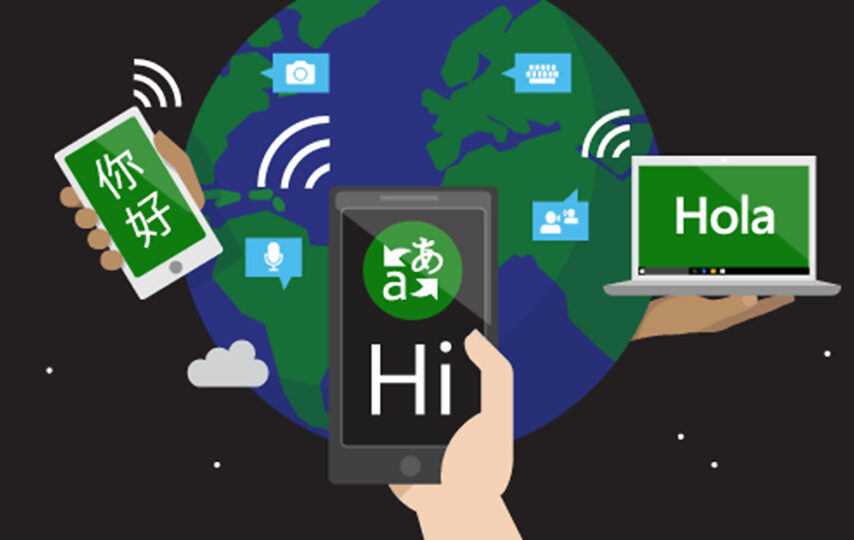Time flies quickly; you realize it when you take a look at things around you. From the time of renaissance to the industrial revolution to the era of the digital world is expanding and evolving. The more technology improves the more distance is reducing due to globalization. It’s amazing how much the human mind can comprehend and invent.
The use of robotics in daily routine for businesses and manufacturing units is common now. It is said robotics will take over manual power in the industrial world, once a myth now seems true. Businesses looking to expand overseas are now relying more on automated translation to reach their target audience. Language has always been a barrier but thanks to human translators, people translate the desired information and present it to the world.
But for how long power of human translators will remain? With the advent of translation software, small enterprises are focusing on using such tools to save the immediate cost. True, automated translation tools are quite effective but are they foolproof?
The machine is just a human creation but we rely on it more than ever. Many say, machine translation will replace human translators in the coming century but it yet has to be seen.
Exploring World of Machine Translation
The idea of machine translation is tempting, imagine if it does replace human translation. We might be headed towards that direction but in the meanwhile, we need to have a closer look at machine translation. With this, machine translation has revolutionized global communication by offering immediate phone interpretation, enabling individuals to bridge language gaps effortlessly and communicate effectively in real-time
One of the earliest examples of machine translation is briefly used in a movie named “The Imitation Game” based on WWII’s decoding machine developed by the Germans. Governments felt the need for coding machines amid the rising tension of the cold war (preceding WWII), and with no personal computing market when technology was far too costly to make MT (Machine Translation) British Military took upon themselves to hire the best mathematicians from the country. In short, they were able to build a machine from scratch that decoded the message.
Note: Translation also means to decode messages/information.
By 1997, AltaVista’s (a part of Yahoo) launched the infamous BabelFish. It could translate between English, German, French, Spanish, Portuguese, and Italian. Since then, machine translation is on the mend, constantly evolving. Now we have computers and online translation software like Google Translate, Gengo, Babbel, and Duolingo, etc.
Technology cannot Permanently Replace Humans
Professional translation services have always been a helping hand for industries to provide an accurately translated content. Either it’s an advertising agency looking for a translator or a healthcare center planning to hire an interpreter, human translators work around the clock. However machine translation was designed to lessen the burden, which it did, but with time more updates are required and they create more room for accuracy which is time-efficient.
For now, machine translation is on the verge of a breakthrough, translators all over the world are using modern tools to ease into the process of translation but still, they dominate the translation industry.
Optimizing Workflow with Machine Translation
One of the curious advantages is the optimized workflow. Remember the time efficiency we just talked about? Machine translation accelerates the translation process far too easily. For instance, proofreading becomes easier and faster. Glossaries and translation memory tools record every frequent change and manage the updates for future projects as well.
But can you rely 100% on machine translation suggestions? No, a translator usually utilizes 5-20% of the translation memory tool. Due to cultural references, phrases, and slang words, etc., it’s not a smart choice to rely all the way on machine translation.
Artificial Intelligence is a Power Asset
How far Google will go to use AI? IT companies similar to Google are focused on studying neural machine translation (also known as deep learning) which involves the use of large amounts of data into computers for processing. By using an algorithm, the computer learns to recognize and organize items which are just the basics of the machine translation software.
Philipp Koehn, from Johns Hopkins University in Maryland, studied machine translation and according to him, machine translation improved over the years but it’s nowhere near the human-level quality. Let’s face the fact, social media also allows automated translation for users only to encourage them to use it more often. Even language schools are teaching languages with the assistance of online programs empowered by artificial intelligence (funded by IT powerhouses) to indicate and learn the level of success.
Is Hybrid Approach Good Enough to Continue?
Technology is the soul of machines. As it seeps through stages of development, machine translation improves in quality and efficiency but is extremely expensive. Translation powerhouses suggest that focusing on a hybrid approach, for now, is the best shot towards translation. The more translators utilize the assistance of online translation products, the more chances are to improvise the translation software.
Focusing on a hybrid approach is an effective methodology for human translators because it increases accuracy, precision, and other quality factors.
To say the future belongs to machine translation may not be wrong but it doesn’t mean it will replace human translation. Machines will keep enhancing the level of accuracy and consistency. Machines are unable to understand the colloquial terms and slangs, which will make translation otherwise complex than necessary.
What is the Future of Machine Translation?
Even as an individual, you face the urge to use machine translation whether it’s for a school project or for business purposes. Millions rely on free online software like Google Translate but even Google’s software is not foolproof until then you can continue to hire translation services.
Until the arrival of Google Neural Machine Translation System (GNMT), Google strongly recommends to not solely rely on GTranslate for long-term projects. The future of machine translation is still in control of human hands and until then you can follow the hybrid approach. It is cost-effective and helps you take one step at a time to understand what machine translation is all about.








